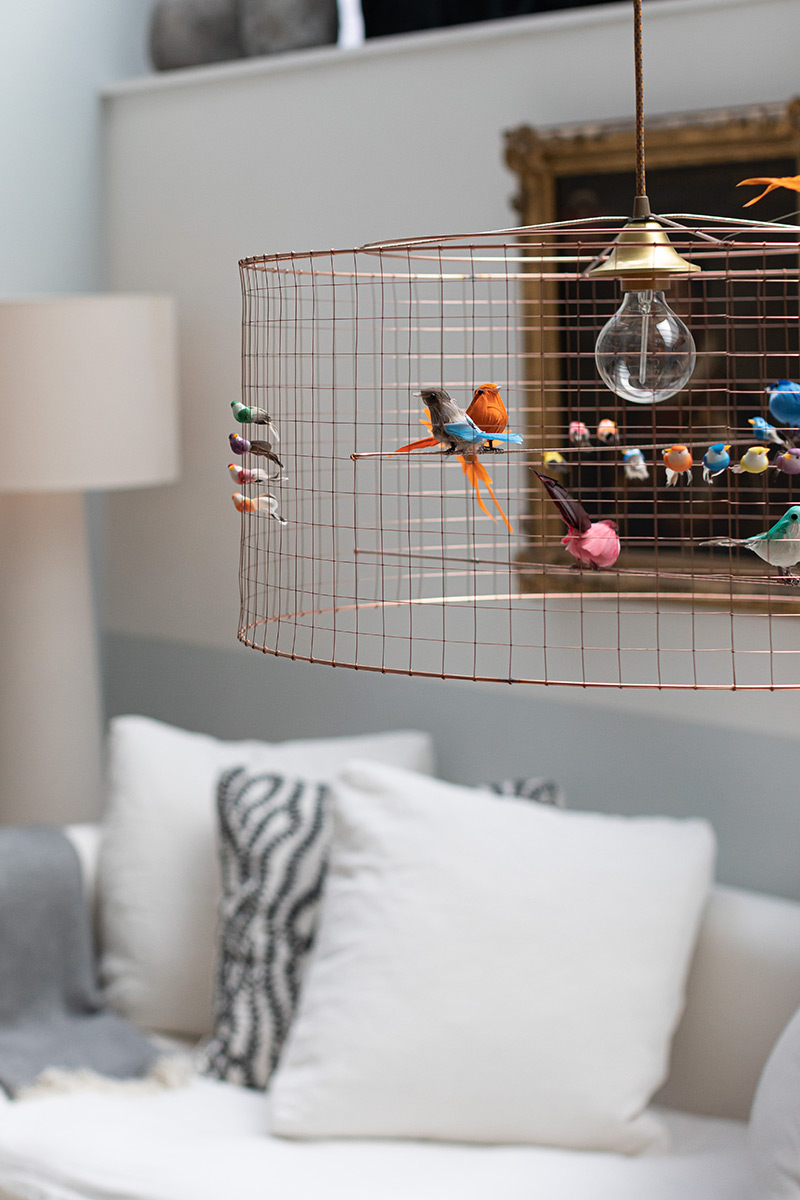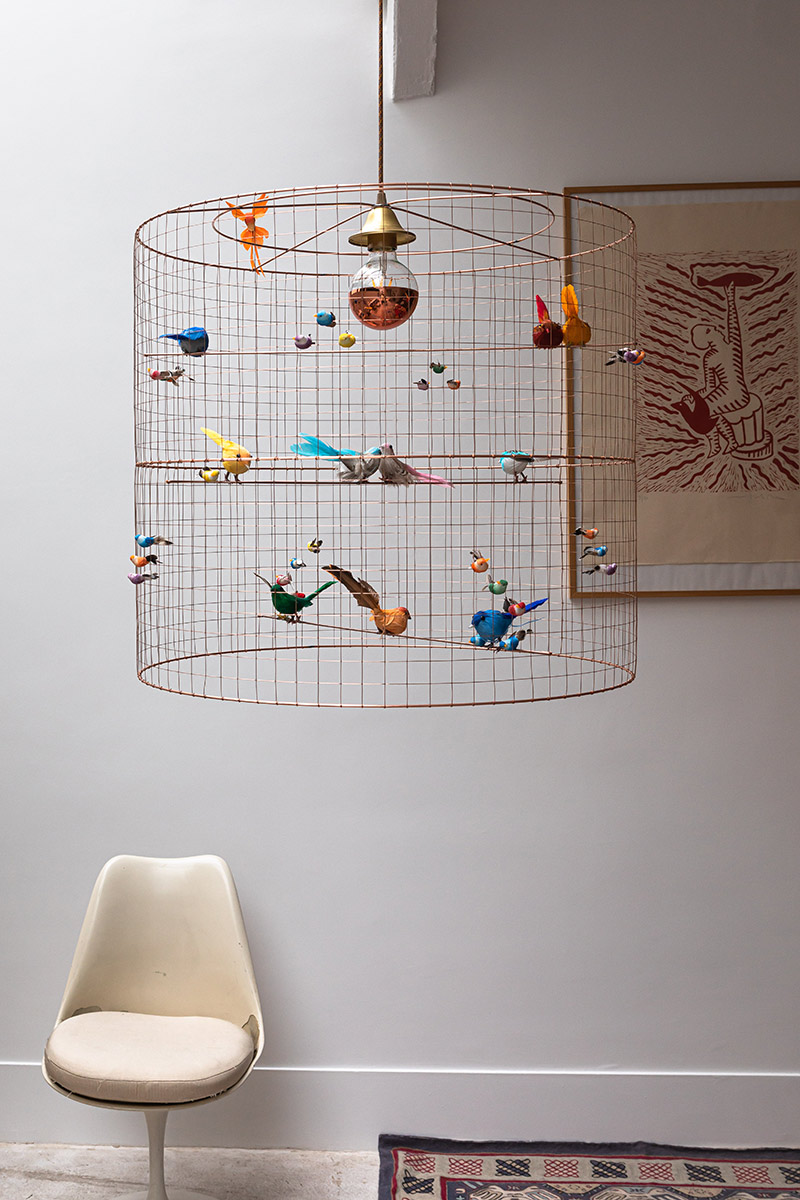MATHIEU
CHALLIÈRES
A self-taught designer, Mathieu Challieres first exercised his creative talents in advertising. Specializing in film writing, he won awards at Cannes and spent most of his career with Publicis. At the dawn of the 2000s, he left advertising for the sake of independence and started creating objects. A hobby that has always occupied him in his spare time. His training as an art historian (he is a graduate of the Ecole du Louvre) has enabled him to acquire a whole vocabulary of forms that he spontaneously puts to use in his creations.
The mechanisms of commercial development being totally foreign to him, he chose not to invest a cent in his company, considering that it would inevitably be money lost. He therefore needed a mode of expression that required almost no capital outlay. This was to be the plaster strip, a technique for which he himself had developed a very unusual skill.
His first plaster luminaires quickly found takers among decorators and prestigious stores such as Le Bon Marché in Paris. In 2006, he created the Volières, an unidentified luminous object, which resembles nothing that came before it. Now iconic, they are distributed in more than thirty countries and are handcrafted in his workshop in Belleville, Paris.
A self-taught designer, Mathieu Challieres first exercised his creative talents in advertising. Specializing in film writing, he won awards at Cannes and spent most of his career with Publicis. At the dawn of the 2000s, he left advertising for the sake of independence and started creating objects. A hobby that has always occupied him in his spare time. His training as an art historian (he is a graduate of the Ecole du Louvre) has enabled him to acquire a whole vocabulary of forms that he spontaneously puts to use in his creations.
The mechanisms of commercial development being totally foreign to him, he chose not to invest a cent in his company, considering that it would inevitably be money lost. He therefore needed a mode of expression that required almost no capital outlay. This was to be the plaster strip, a technique for which he himself had developed a very unusual skill.
His first plaster luminaires quickly found takers among decorators and prestigious stores such as Le Bon Marché in Paris. In 2006, he created the Volières, an unidentified luminous object, which resembles nothing that came before it. Now iconic, they are distributed in more than thirty countries and are handcrafted in his workshop in Belleville, Paris.
THE WORKSHOP
I live and work in Paris.
I started out in the Sentier, in a half-apartment of a caretaker. Producing in the capital has become quite rare, because square meters are expensive. I could set up somewhere else but, for the record, my vintage Fiat 500 burned down in front of the Eiffel Tower 30 years ago and I've been riding my bike ever since. At the time, people thought I was mad, or poor, or even a poor madman.
This choice led me to make another one: keep my workshop in Paris because I didn't want to cycle more than 45 minutes to get there.
Today, my workshop is a stone's throw from the Boulevard de Belleville. That's where everything is made, except for a few unique pieces or limited editions. You really have to know how to manage the lack of space. The orders have to leave every day, otherwise we couldn't stock them.
A team of 5 to 6 people work hard to make sure that nothing gets in the way of the manufacturing process and the shipping of the parcels to the four corners of the world.
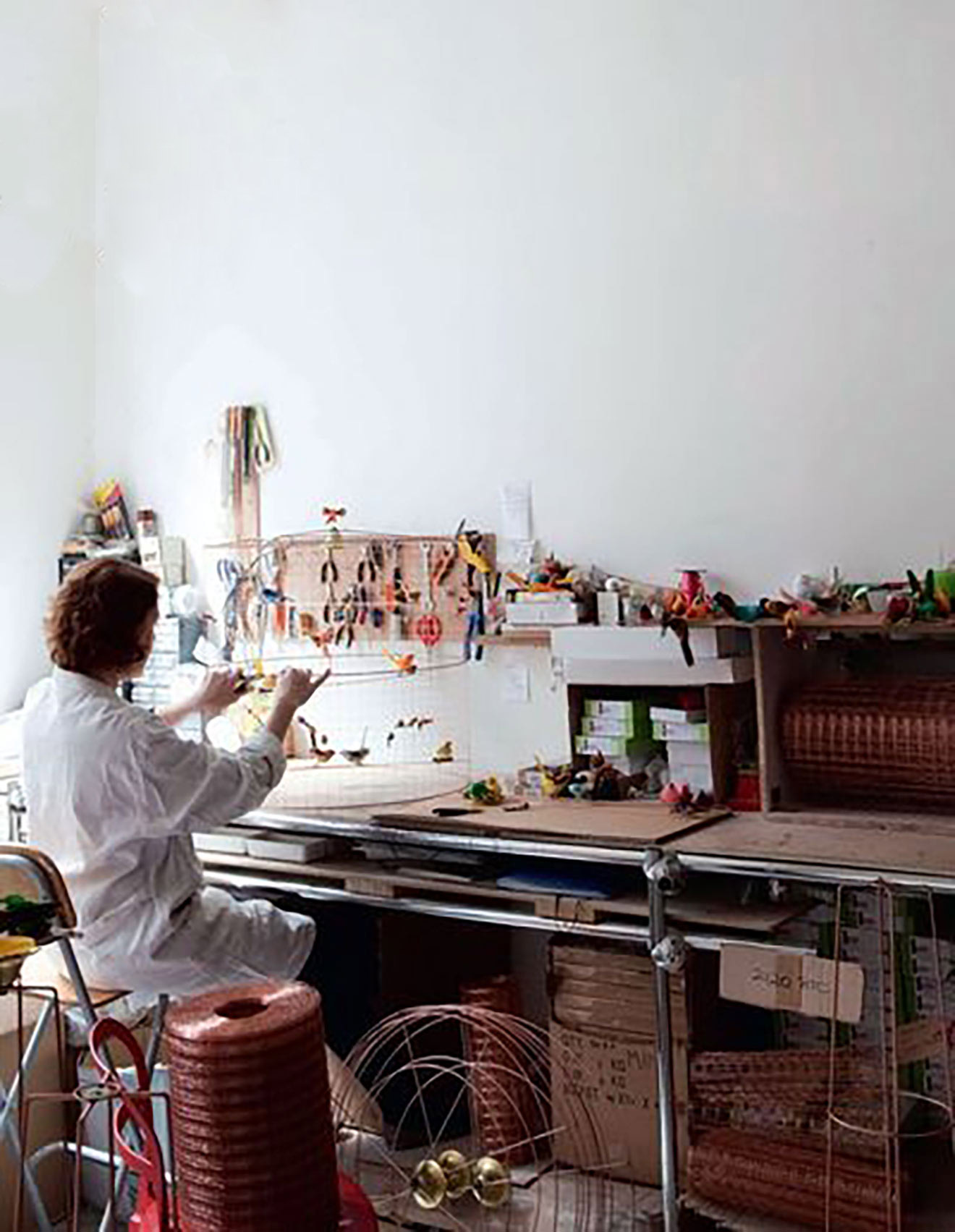
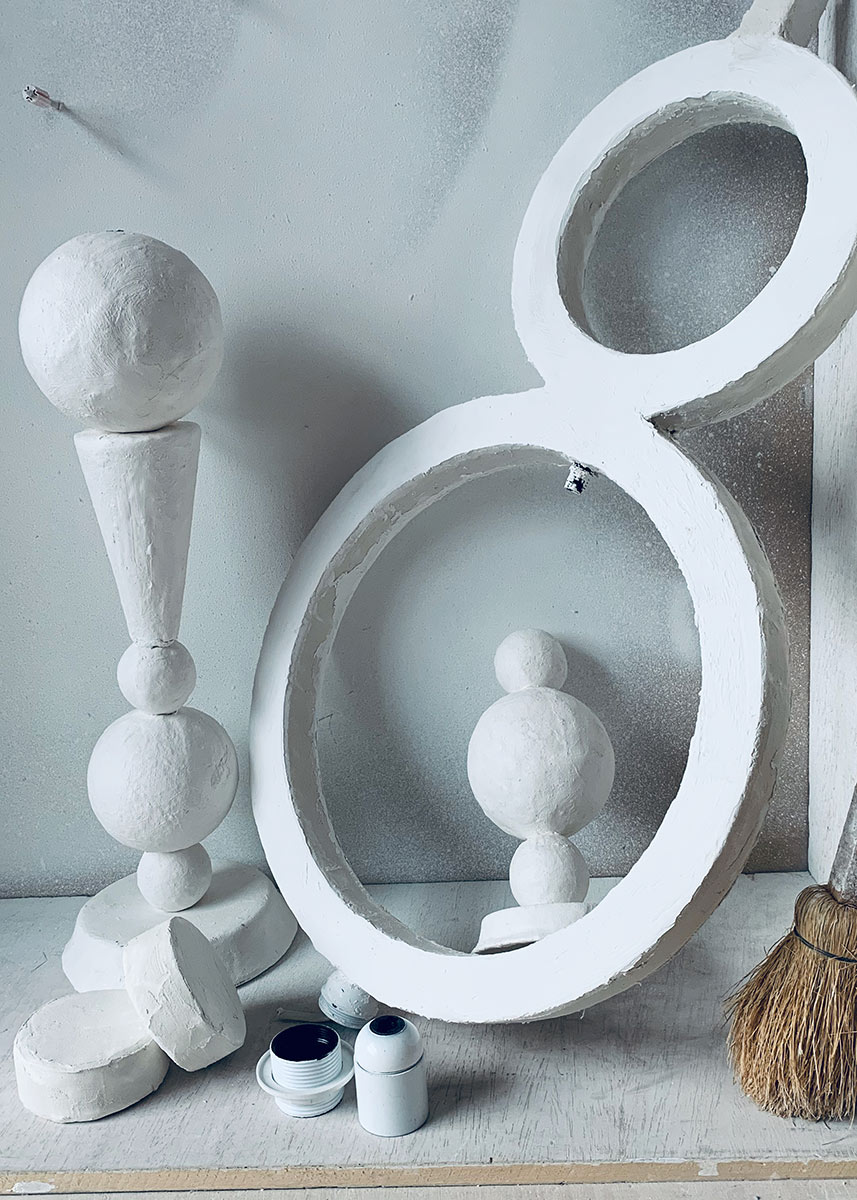
THE CREATION
Unlike most designers, I do not rely on visual sources of inspiration. I usually take a purely theoretical question as a starting point and try to give it the least bad answer possible.
The Balthazar chandelier is a good example of this method. It was born from the desire to synthesize the spirit of a 17th century chandelier. It is composed of "broken" volutes (a classic motif par excellence), a few cups, 3 balls and a cone. For a neophyte, this chandelier does not evoke anything never seen before. What is interesting is that it was nevertheless considered as such by the courts.
In an infringement suit against two major French retailers and a major German lighting manufacturer, the Paris Commercial Court ruled that the Balthazar chandelier constituted a "work of the mind" within the meaning of the Berne Convention on Intellectual Property. In other words, the judge considered that its uniqueness could be used against any object designed previously. Consequently, the counterfeiters and their distributors had to be condemned.
Similarly, the creation of the Volières, too often wrongly called birdcages, is a perfect illustration of this creative process based on a conceptual and non-visual approach.
In this case, I also wanted to find something that would not be based on harmonious symmetry, like the plaster chandeliers I had been creating until now. These shapes come spontaneously under my pencil. No doubt thanks to my training as an art historian, which has given me an inexhaustible vocabulary of shapes. But then, in order to transpose the vigour and the correctness of the proportions of the sketch into realistic dimensions, it takes very long hours of tedious work to perfect it.
The starting point was therefore the desire to find an idea for a light fixture that was impossible to fix by drawing.
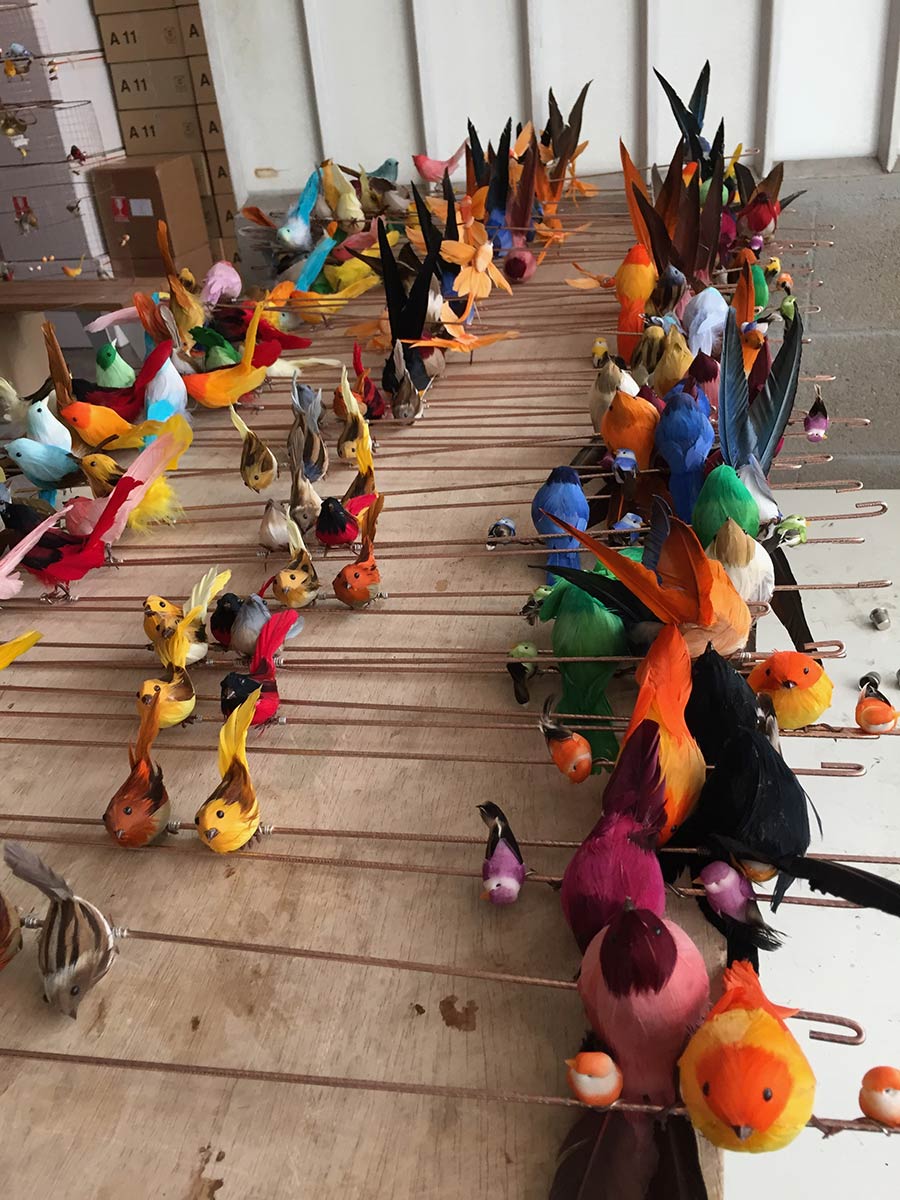
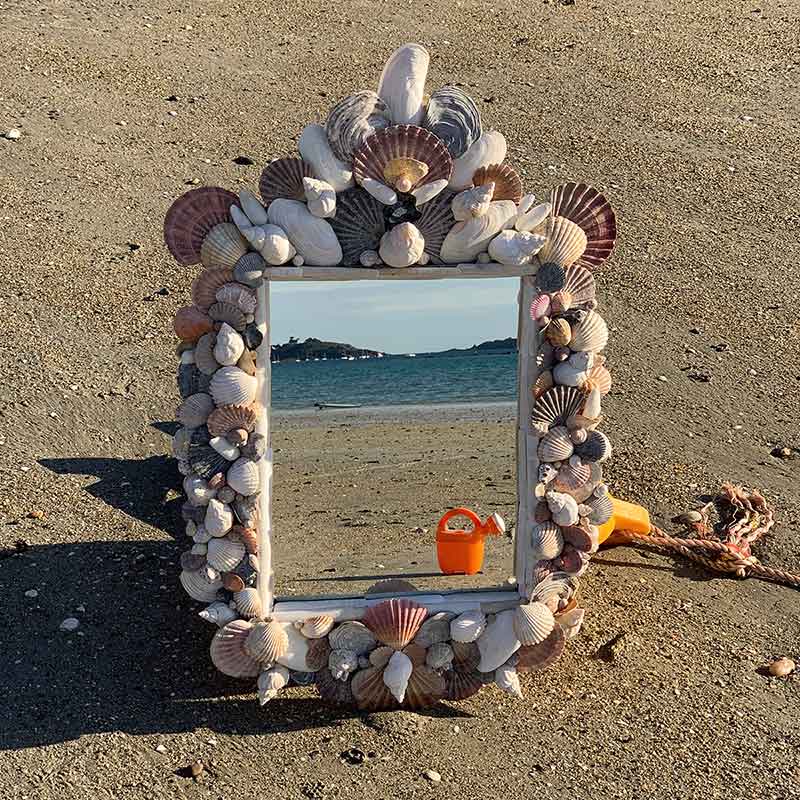
So the process was as follow.
As I didn't want an object born from a sketch, I thought of the mirror frames I make in Brittany, as a creative game, with shells picked up on the beach. Wanting to draw them first would be totally illusory. Predicting is impossible. Seashells are as they are. Not as you would like them to be. No two shells are completely identical. It is only by placing them that you find the right proportion, the right juxtaposition of hue and volume.
I therefore looked for an idea to implement, or stage, pre-existing elements.
Since shells were not suitable for this exercise, I looked for a recurring motif in the world of decorative arts that would be suitable.
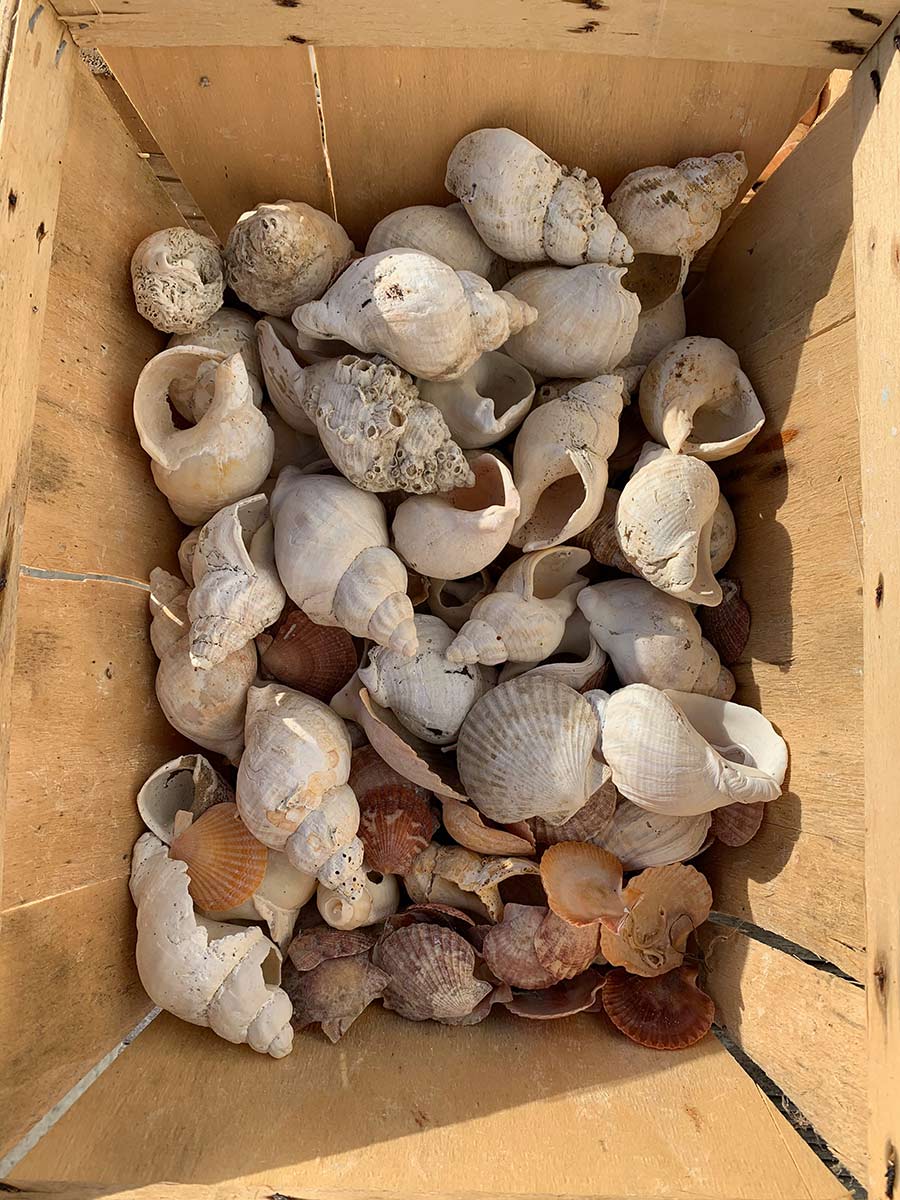
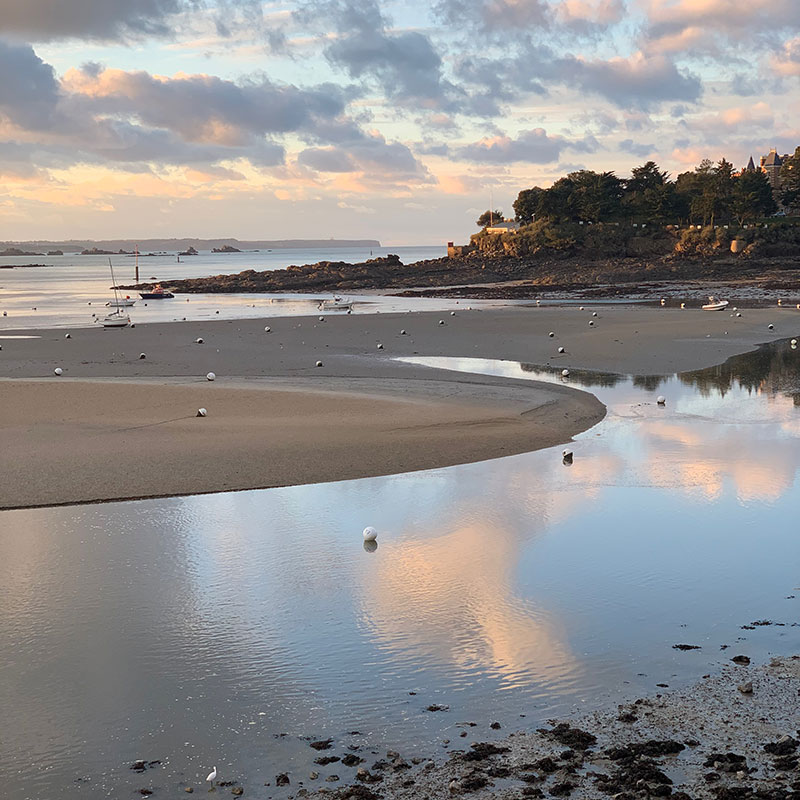
The bird quickly became the obvious choice. From Cretan frescoes to Lurçat’s tapestries, via Snyders or Picasso, they are everywhere. But which bird? Birds made of glass, bronze, porcelain, cut out of cardboard, or zinc, or painted, but painted on what, or embroidered, or made of wire...? The answers are innumerable.
By instinct, I wanted the birds to be as natural as possible, seeming to have come of their own free will to keep us company for a while, before perhaps flying away again. The challenge now was to welcome them, to orchestrate their presence in the room.
It was obvious that a birdcage would be in complete opposition to the feeling of freedom to be transcribed. Moreover, putting a light bulb in a birdcage is like turning a bottle into a lamp. It also became clear very quickly that the idea was not to make yet another chandelier or lamp with birds on it. That would have reduced the birds to mere complements of the objects, whereas they should be the very essence of the object.
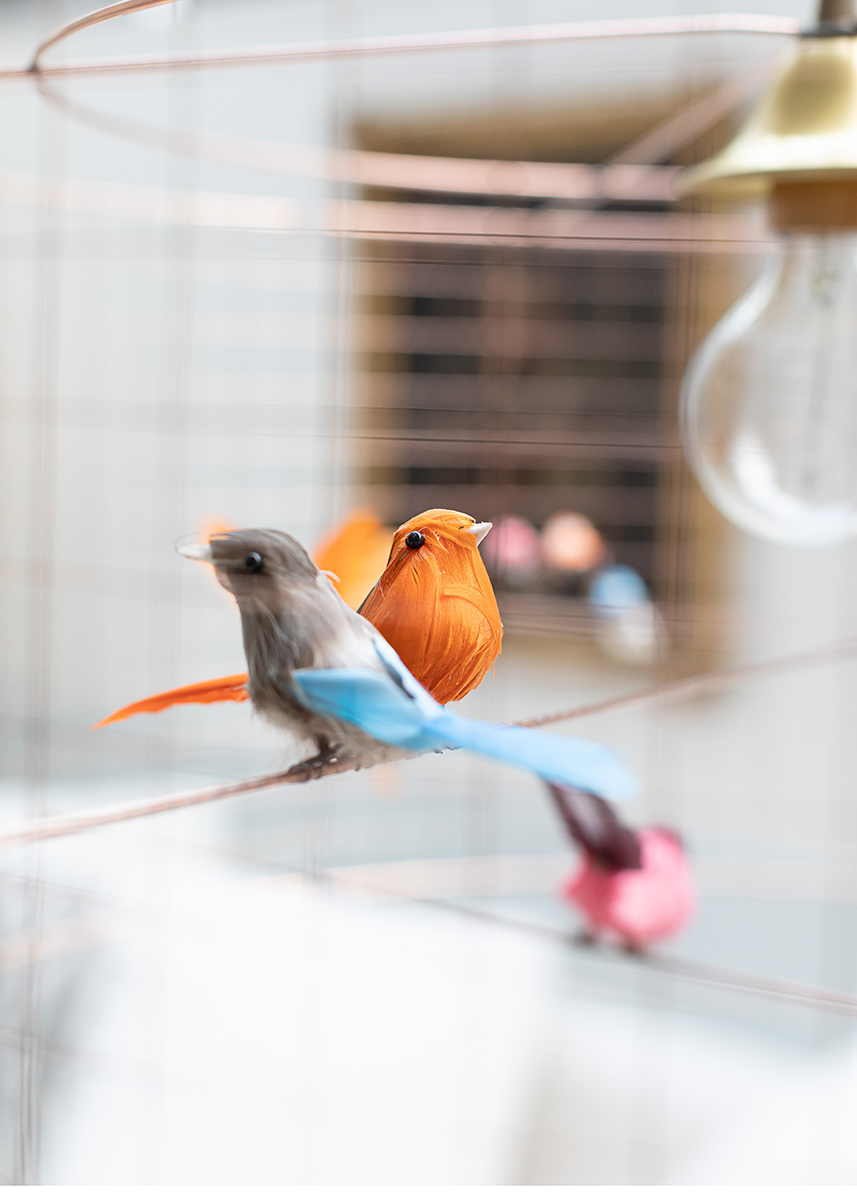
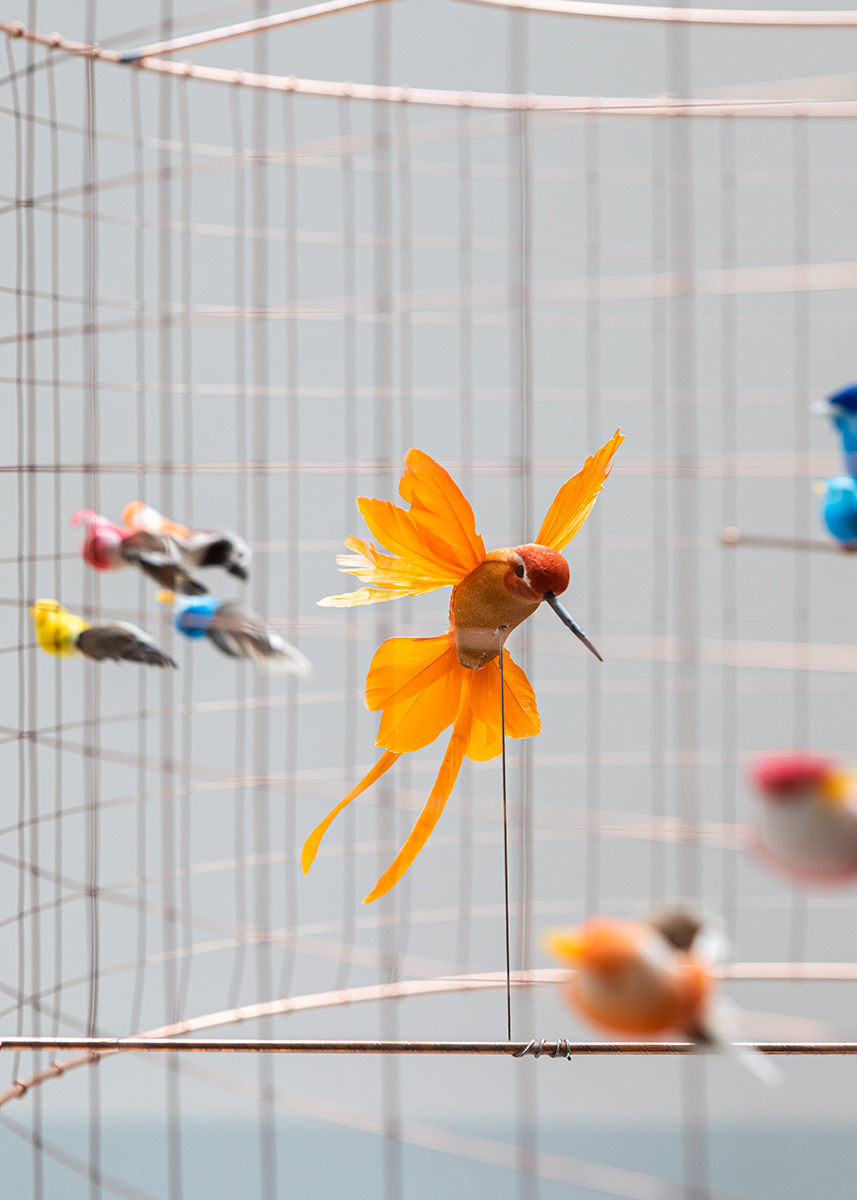
So we had to find something that was both a light and a space in which the birds could feel at home. A space within a space. Sober and consistent with a light fixture. Why not put the birds inside a lampshade, on simple perches?
The problem is that the birds wouldn't really be visible in a classic lampshade. Or you'd need a clear plastic shade, which would be cold and completely at odds with the naturalness of the birds.
So what would be both transparent and allow a lampshade to be made? A wire mesh. But one that was not visually aggressive, like chicken wire would be. It had to be nothing that evoked anything prison-like. We needed a wire mesh that was as sober as possible, for a lampshade with the most sober shape possible: a cylindrical lampshade made of square mesh. But a wide mesh, and a fine wire.
All that was left to do was...
I quickly found the birds I needed, but it took 6 years before I found the right wire mesh by chance. 6 years during which the Volières lived only in my imagination.
Today, the Volières and their birds emigrate regularly to some thirty countries and occasionally make their appearance in a ten or so others.
A singular success for an even more singular object.
